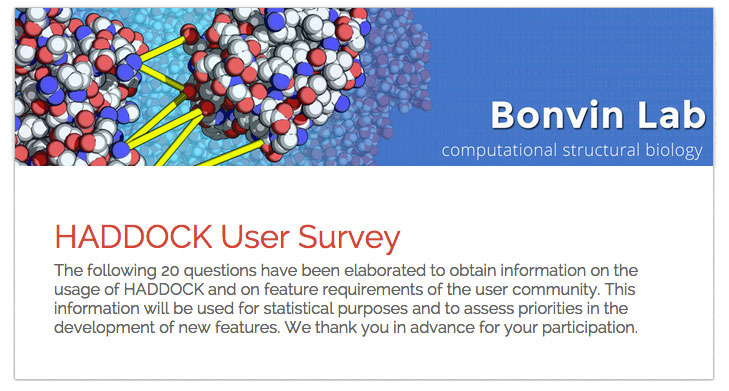
A month ago we asked all HADDOCK users to complete a survey to let us developers
know better who they are, how happy they are, and which features do they miss
the most. The results of the survey are now publicly available here.
A quick overview of the results of the survey indicates that HADDOCK is used
predominantly in academia, namely by Ph.D students and staff members. The user
base is well-distributed between new, old, and “veteran” users, roughly half of
which have cited HADDOCK in their publications. Interestingly, while we originally
designed HADDOCK for protein-protein interactions, more than half of the
respondents indicated they have applied it to several other biological problems,
namely protein/nucleic acids and protein/ligand docking.
The survey also highlighted several areas where HADDOCK can improve, not only for
better performance and accuracy, but also for a smoother user interaction. We
appreciate all the answers, comments, suggestions, and criticism, and we will
certainly include them in our next development cycle.
Lastly, the overwhelming majority of the respondents indicates they are either
happy or very happy with HADDOCK and its support team. Indeed, some of the written
comments made us quite proud!
Thank you all for the support and for making HADDOCK such a successful software!
- The HADDOCK team
